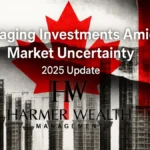1. Investment in Broad Market Index Funds: VTI & VOO
The Vanguard Total Stock Market ETF (VTI) and Vanguard S&P 500 ETF (VOO) represent two of the most reliable pillars in long-term investing.
1.1 Investment in VTI – Total Market Exposure
VTI tracks the total U.S. stock market, covering small-, mid-, and large-cap stocks.
With a current price of ~$309.80 , VTI offers low cost, strong diversification, and historically solid performance. According to Bankrate, “broadly diversified index funds […] have largely outperformed actively managed funds”
1.2 Investment in VOO – S&P 500 Focus
VOO mirrors the S&P 500’s 500 largest U.S. companies.
Trading around $578 financeturn0finance1, it’s the largest ETF globally, with over $630 billion in AUM, according to FT. Meanwhile, its fee is just 0.03% versus SPY’s 0.0945%, it’s the largest ETF globally, with over $630 billion in AUM, according to FT. Meanwhile, its fee is just 0.03% versus SPY’s 0.0945%
This makes VOO a low-cost, stable choice for long-term investors focused on blue‑chip growth.
2. Investment in Growth‑Oriented ETFs: QQQ & VUG
If you’re comfortable with higher volatility for greater growth, consider Invesco QQQ (QQQ) and Vanguard Growth ETF (VUG).
2.1 Investment in QQQ – Tech‑Heavy Growth
QQQ tracks the Nasdaq‑100, heavily weighted toward tech giants like Apple, Microsoft, Nvidia—over 7% each in S&P 500
With a current price of $561.25 financeturn0finance2, QQQ has historically outperformed many other ETFs, especially during tech-driven bull markets, QQQ has historically outperformed many other ETFs, especially during tech-driven bull markets
2.2 Investment in VUG – Large‑Cap Growth Factor
VUG tracks the CRSP US Large Cap Growth Index, focusing on growth characteristics.
Its assets sit at ~$165 billion, with an expense ratio of 0.04% Kiplinger.
Morningstar reports year‑to‑date growth for U.S. growth funds of ~8.75%, higher than value’s 5.70% Morningstar.
3. Investment in Diversification Strategies: S&P 500 vs. Total Market
3.1 Investment in the S&P 500
S&P 500 funds, like VOO or IVV, offer a stable core with large-cap dominance (top ten stocks—Microsoft, Nvidia, Apple—make up ~38%)
3.2 Investment in Total Market
Total market funds like VTI include small & mid-caps, which can boost long-term returns.
Investopedia finds that total market funds carry higher growth potential, though with slightly more volatility
Bottom Line: Choose stability (S&P 500) or broader growth (Total Market) based on risk appetite.
4. Other Top Investment ETFs for 2025
4.1 iShares Core S&P Total U.S. Stock Market ETF (ITOT)
Another broad-market ETF with low cost, recommended alongside VOO and VTI by Morningstar
4.2 Vanguard Dividend Appreciation ETF (VIG)
Focuses on companies that consistently grow dividends, recommended as a long-term hold
4.3 iShares MSCI USA Quality Factor ETF (QUAL)
Quality-focused ETF, recommended by BlackRock as a stock strategy in 2025

5. Stats & Market Trends Fueling Investment Appeal
- U.S. ETFs have reached $11.6 trillion in assets across 4,300 funds
- Passive strategies dominate ~70% of U.S. market share; Vanguard, BlackRock, and State Street control 76%
- Over 99% of 401(k) plans include high-fee “clunker” funds—investing in low-cost ETF alternatives could save significantly
- Historically, stocks return ~10% per year; real estate and gold have averaged 8% and 6.4%, respectively
6. Famous Names & Investor Perspectives
- John C. Bogle, pioneer of low-cost index investing, advocated diversification and low fees
- Cathie Wood of Ark Invest once achieved ~39% annual return from 2014–2021 in ARK Innovation ETF—but reminds us growth can bring volatility
- Morningstar analysts quoted: “The fastest-growing ETF ever is iShares Bitcoin Trust ETF IBIT…”highlighting crypto’s rising but speculative role.
7. Investment Quotes to Remember
- “Index funds are a great way … you easily get access to a diversified portfolio at a low cost.” — Brian Baker, Bankrate Bankrate
- “While gold and real estate can support a portfolio, … they shouldn’t overshadow more liquid, growth‑oriented investments like stocks.” Investopedia
8. FAQs – Your Investment Questions Answered
Q1: What’s better—VTI or VOO?
A: VTI gives you full market exposure, including small/mid-caps. VOO focuses on large, established companies. Choose based on tolerance for volatility vs. desire for broader growth.
Q2: Can I hold ETFs in a 401(k)?
A: Yes. Many plans offer ETFs; if yours doesn’t, consider rolling into an IRA or taxable account. Experts note replacing high-fee “clunkers” with low-cost ETFs can significantly boost retirement savings Kiplinger.
Q3: How much should I invest regularly?
A: A disciplined approach—dollar-cost averaging monthly—mitigates volatility risk. A steady 10‑20 % of your income directed toward these funds can compound into significant retirement wealth.
Q4: Are ETFs risky?
A: All equities involve market risk. However, these ETFs are highly diversified. Volatility exists, especially with growth ETFs, but long-term holding typically smooths out short-term swings.
9. Structure & Transition Flow
- Overview – Introduce the investing landscape.
- Core Funds – VTI, VOO as foundational choices.
- Growth Tilt – QQQ, VUG for higher upside.
- Diversification Debate – S&P vs. Total Market.
- Other Options – Quality, dividend, small‑cap exposures.
- Market & Statistical Context – Solidify rationale.
- Voices – Quotes & famous perspectives for credibility.
- FAQs – Anticipate investor concerns.
10. Additional High‑End Links (Four Only)
- Vanguard’s official overview of Total Stock Market ETF (VTI)
- Morningstar’s guide: 3 Top US ETFs for 2025 and Beyond
- FT article: Vanguard triumphs over State Street to take largest ETF crown
- Bankrate’s article: Best Index Funds In July 2025
11. Final Thoughts
In 2025, the foundation of a successful long-term investment strategy continues to be low-cost, passive index funds and ETFs. Funds like VTI and VOO offer diversified exposure with minimal fees. For those seeking higher returns and accepting volatility, growth-focused ETFs such as QQQ and VUG remain attractive. The balance between stability and upside potential, managed through consistent contributions and disciplined holding, is the key to compounding success.
🔄 Final Takeaway
Invest in broad-market, low-cost ETFs; overlay with growth or factor-based funds to align with goals; stay disciplined; and avoid high-fee traps. That is the blueprint for investment success in 2025—and beyond.


